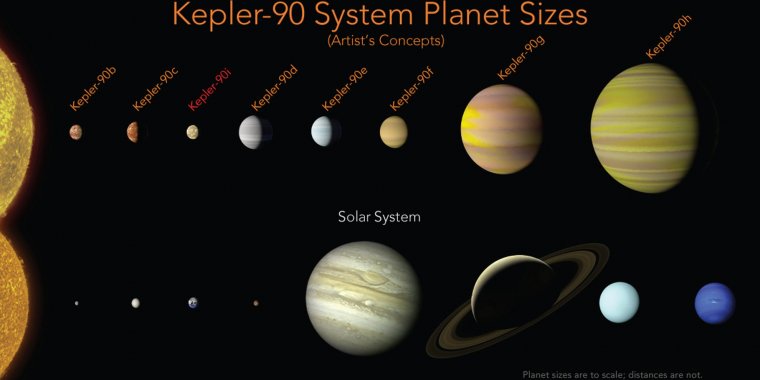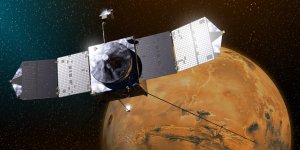| News / Space News |
Artificial Intelligence, NASA Data Used to Discover Eighth Planet Circling Distant Star
Our solar system now is tied for most number of planets around a single star, with the recent discovery of an eighth planet circling Kepler-90, a Sun-like star 2,545 light-years from Earth.

With the discovery of an eighth planet, the Kepler-90 system is the first to tie with our solar system in number of planets. Artist's concept compared with our own solar system. Image credit: NASA/Ames Research Center/Wendy Stenzel
The newly-discovered Kepler-90i - a sizzling hot, rocky planet that orbits its star once every 14.4 days - was found using machine learning from Google. Machine learning is an approach to artificial intelligence in which computers "learn."
In this case, computers learned to identify planets by finding in Kepler data instances where the telescope recorded changes in starlight caused by planets beyond our solar system, known as exoplanets.
The discovery came about after researchers Christopher Shallue and Andrew Vanderburg trained a computer to learn how to identify exoplanets in the light readings recorded by Kepler - the miniscule change in brightness captured when a planet passed in front of, or transited, a star.
Inspired by the way neurons connect in the human brain, this artificial "neural network" sifted through Kepler data and found weak transit signals from a previously-missed eighth planet orbiting Kepler-90, in the constellation Draco.
Machine learning has previously been used in searches of the Kepler database, and this continuing research demonstrates that neural networks are a promising tool in finding some of the weakest signals of distant worlds.
Other planetary systems probably hold more promise for life than Kepler-90. About 30 percent larger than Earth, Kepler-90i is so close to its star that its average surface temperature is believed to exceed 800 degrees Fahrenheit, on par with Mercury. Its outermost planet, Kepler-90h, orbits at a similar distance to its star as Earth does to the Sun.
Kepler-90i wasn't the only jewel this neural network sifted out. In the Kepler-80 system, they found a sixth planet. This one, the Earth-sized Kepler-80g, and four of its neighboring planets form what is called a resonant chain - where planets are locked by their mutual gravity in a rhythmic orbital dance.
The result is an extremely stable system, similar to the seven planets in the TRAPPIST-1 system. (NASA)
YOU MAY ALSO LIKE




